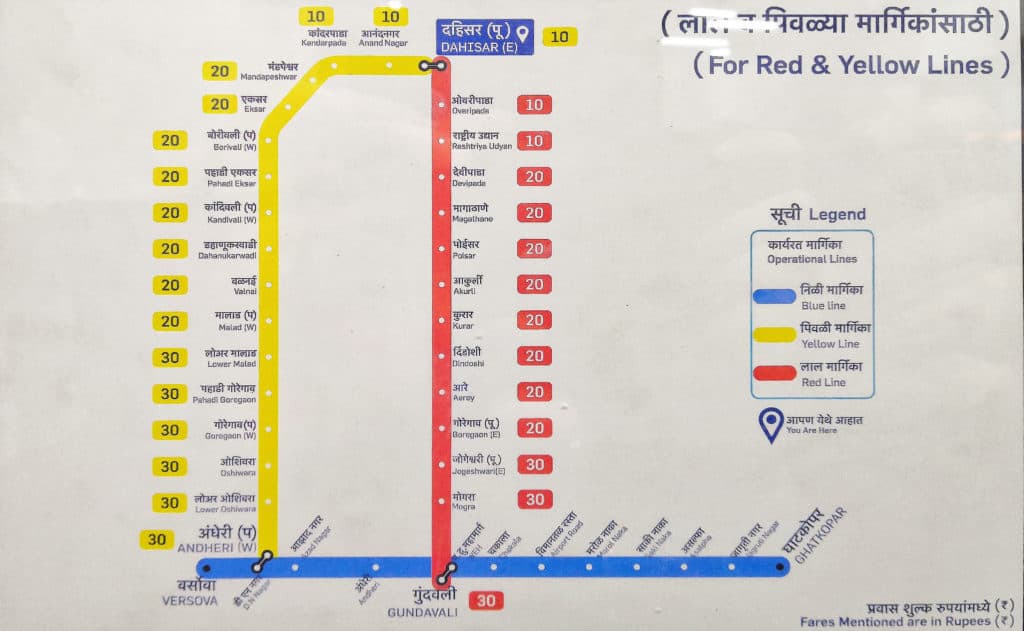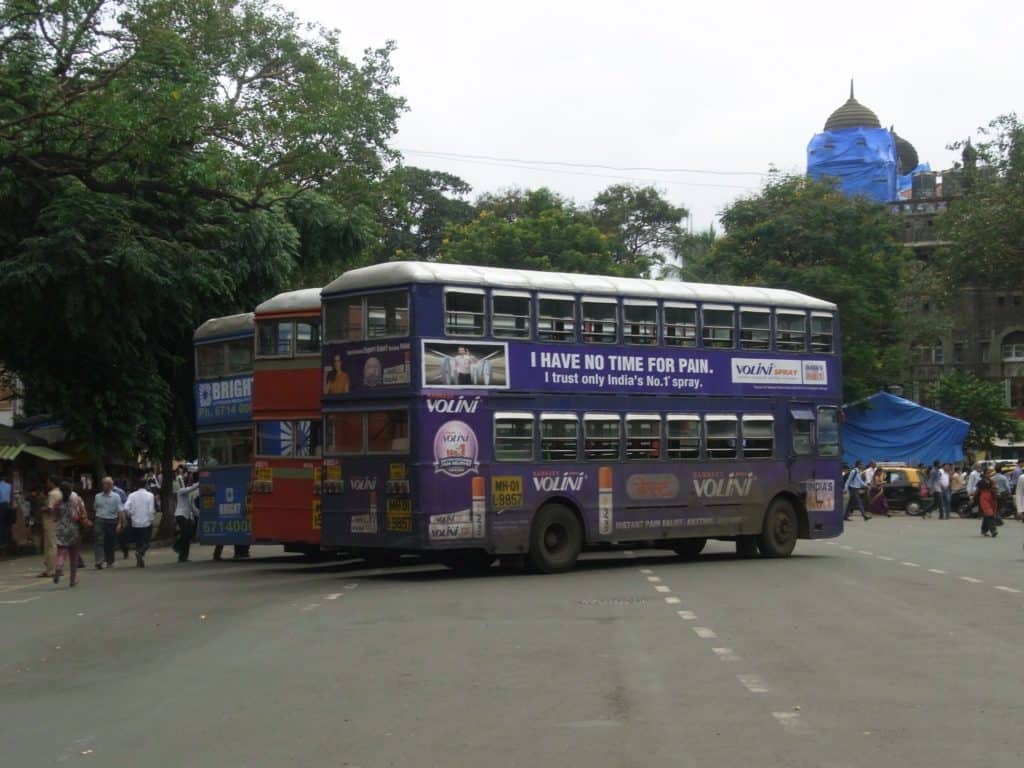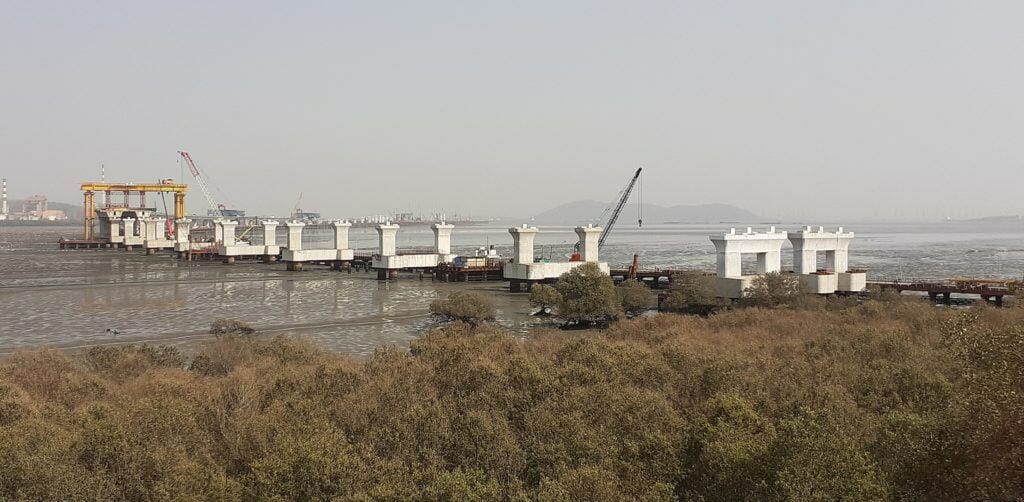For years now, Mumbaikars have travelled on roads through barricades exclaiming, “Mumbai is upgrading.” After 8 years of waiting, the city finally witnessed the results of metro construction that revealed itself on April 2nd, with the launch of the metro lines 2A and 7, between Dahisar and DN Nagar and Dahisar and Andheri East respectively.
By the end of 2025, the Mumbai Metropolitan Region Development Authority (MMRDA) has promised a 200 km long network of the Mumbai metro. Across the north-south and east-west axis, Line 2A, 2B, 3, 4, 5, 6 and 9 are expected to carry millions of commuters within the city and beyond.
Technical upgrades are also underway, at a faster pace than the physical ones. This week, the Government of Maharashtra launched the National Common Mobility Card (NCMC) in the city, which can be used across BEST buses, railways, metros and other public transport modes. Along with it are 20 digital-only buses that will allow entry only using smart cards or the Chalo mobile app. The app offers live-tracking of the buses, which will gradually phase out to an all-electric fleet.
Apart from public transport, other infrastructure additions are also being laid. Several major roads, including the coastal road, Mumbai trans-harbour link road, Goregaon-Mulund link road, are in construction.
To understand the effects of these changes on the future of transport in Mumbai, Citizen Matters spoke to transport analyst Sudhir Badami, a veteran in Mumbai’s transport committees. Sudhir was a member of the Bombay High Court committee to make the railways safe and friendly for persons with disability. He was also a member of Municipal Corporation of Greater Mumbai’s (MCGM) think tank on traffic and transportation issues in Mumbai. Below is an edited interview with him.
This month, Mumbai saw two new metro lines start operations, albeit partially, after a gap of 8 years. What kind of difference do you think the planned metro network will have on commuting and public transport in Mumbai in the coming years?
Allow me to indulge in the past just a little bit. In 2004, MMRDA unveiled the 146.5 km Mumbai Metro Master Plan of 9 lines (MMMP-2004), at a total estimated cost of Rs 19,500 Crore. The cabinet of Government of Maharashtra approved it with great enthusiasm, and the 11.4 km long Line 1 between Versova-Andheri-Ghatkopar began construction in 2006. It commenced operations on June 8th, 2014. The trains were designed to have six coaches, each with a capacity of 300 passengers and frequency of 3 minutes, giving a peak time capacity of 36,000 people per hour per direction (PPHPD) . In reality, frequency has been 4-8 minutes with four coaches only, thereby giving a capacity of less than 18,000 PPHPD.
The capacity has not been enhanced in the past 8 years, possibly because of the high cost of rolling stock of the metro, despite the scope and need. The remaining commuters are left to suffer packed suburban trains, with densities as high as 16 persons per square metre (when the acceptable norm is 6 persons per sq m).
The MMRDA worked on grander plans for Mumbai’s mass rapid transport system (MRTS), keeping the metro as a key mode of transport. Some lines of the MMMP-2004 were rerouted after the Comprehensive Transport Study Report of 2008 (CTS-2008). It highlighted that the greatest passenger load is between Andheri and Borivali, with density being high upto Virar. So it was natural that the northern sections of Line 2A and Line 7 be prioritised, and followed by their southern sections within six to eight months. They increased the routes to 14 in the new plan MMMP-2015, going upto 193 km beyond the limits of MCGM.
With this, it will definitely be a much safer and comfortable commuting experience for the commuters of Mumbai and MMR, provided certain issues are addressed. Otherwise one can expect car and two-wheeler users to continue using their personal vehicles, and there won’t be respite from road congestion.

The newest lines 2A and 7 are expected to reduce the traffic on the parallel Western Express Highway by 20% and carry 12 lakh people daily by 2031. Do you think this is a reasonable forecast?
The newest lines first need to be completed so they reach the existing Metro Line 1 for people to reach the employment centres of MIDC and SEEPZ in greater comfort and convenience. Simultaneously, the full potential of Line 1 must be put in place to attract private vehicle users. The proverbial first and last-mile connectivity should be available adequately. Only then the forecast of reduced road congestion and ridership is reasonable.
What are the make-or-break factors that will decide the success of the metro network – last mile connectivity, accessibility, route, or something else? What steps can the metro take to ensure success?
Greater Mumbai is an ideal city for running an MRTS, such as the metro, because it is compact and highly dense. The 250 km suburban rail network along with 193 km of proposed metro rail network within the MCGM, Thane and Mira-Bhayandar municipal areas form a fairly well spread out MRTS network, reaching vast areas accessible by walk from stations. Yet, there will be areas that need first and last-mile connectivity, and in the long run, it will determine extensive use of the metro.
Since the stations are to be accessible by walk, it is also essential to ensure that walking infrastructure is safe and comfortable.
Read more: Mumbai Metro progress update: What’s on the cards?
Will the metro decrease the burden on the railways substantially?
Assuming that the MRTS through the metro operates safely, quickly and comfortably, many users – even those who own or have the capacity to own cars – are likely to shift, reducing the load on the railways significantly. If the fare structure for the metro is reasonably low, many more will shift depending on convenience. However, that point is nowhere in the near future. We cannot expect a reduction in rail congestion for two or three generations.
We’re seeing a greater technological integration in public transport, with digital-only buses and the ability to book metro tickets through WhatsApp. What are your thoughts on this – is it just a natural progression or will it create problems with accessibility?
All walks of life are becoming digitally managed these days and will continue to do so, with or without smartphones. These technological integrations will only help overcome shortcomings in transport but will not solve the issues. Getting tickets digitally or knowing when the next bus will come (with the Chalo app) does not solve the real problem of congestion. We have to match the peak-time hourly capacity with the peak-time hourly load.

The metro is more expensive than the railways and BEST, and we’ve seen people choose the bus over the metro when its fare was slashed to Rs 5 in 2019. Will the cost affect its ridership?
We cannot disregard the fact that 40-50% of Mumbai lives in slums. The metro is expensive and the recovery of investment cannot happen through fare collection alone. People will opt for the metro based on what works for their wallets, time, comfort and safety. Individually, people will also look at their current overall commuting expenses (monetary and time) and how the commencement of metro operations will alter/increase them.
The BEST buses remain overburdened. Why do you think that continues, and how can the journey of the users be made better?
BEST slashed its fare in 2019 and introduced smaller and AC buses, enabling access to roads to the suburban railway stations as well as roads narrowed due to the metro construction. Shared rickshaws and taxis have become costlier in comparison, and that’s attracting more people to the buses than earlier. Smaller buses have made BEST operations more efficient.
The journey of bus users can surely be made better with innovative ideas.
Alongside the focus on public transport, Mumbai is also seeing the construction of major roads, like the coastal road and the Mumbai Trans Harbour Link (MTHL). Are these upgrades in road infrastructure necessary, and is the BMC and MMRDA going about it wisely?
It’s no doubt that some road constructions, such as the MTHL connecting the MMR mainland and the densely populated commercial city of Mumbai, are necessary. The Coastal Road too will connect different areas of Mumbai at good speeds all the way to Vasai-Virar, which is a natural growth centre from a manufacturing, commerce and business perspective. This centre, like the Navi Mumbai areas where construction of the new airport (NMIA) is underway, will get high speed connectivity. Where the coastal road project is concerned, it might be a good idea to provide recreational space along the seaside for people.

Are people shifting away from public transport in Mumbai? The MMRDA metropolitan commissioner said the percentage share of public transport use has fallen to 9-10% of the total. Does the city need a strategy to increase its public transport use?
If we perpetually keep talking of providing public transport yet do nothing to bring it into reality, those who are affluent will continue to opt for the comfort of their air-conditioned cars. Since 2017, we’ve seen wiser planning and implementing of public transport, MMMP-2015 being one. So there is hope that the public transport user share will improve to its original glory.
What is the biggest gap in commute in Mumbai today according to you? How can it be fixed?
The biggest gap in commute in Mumbai today is the peak time capacities of MRTS. The suburban railways carry about 3,60,000 persons per hour (PPH) at peak time, according to the CTS-2008, though not uniformly so. But its capacity is about 1,80,000 PPH. Over 2,500 people die annually because of the overcrowded trains.
The metro was proposed to reduce congestion on roads and in the suburban trains, and while it has shorter routes, they go beyond the reach of the railway. If we assume they have 8 coaches and run at a peak frequency of 3 minutes, the maximum hourly capacity will be 1,80,000 PPH in the Dahisar-Thane to Bandra-Mankhurd band, just about touching the needed capacity. Hopefully these will be operational by 2031.
But like in Metro Line 1, none of the lines will be operated with their full design capacities. The additional capacity will reduce some of the railway’s load, but achieving the target of 1,80,000 PPH will take much longer than 2031. In the north-south direction, there will be a capacity shortage of 1,50,000 PPH over and above the planned 50,000 PPH from Metro Lines 2A, 4 & 7. Even after spending so much money, it will not reduce road congestion and air pollution.
Providing the full capacities needed by any mode of public transport is urgent. As per the detailed figures in various metro documents, the needed capacity will not be achieved any time soon by the metro alone. Pushing a larger number of car users to adopt public transport quickly is urgent, and possible if one designs and implements a Bus Rapid Transit System (BRTS) quickly. And it is possible, because the cost of a BRTS is less than 10% of the overall metro cost, as is the time needed for implementation.
Note: Certain portions of the interview have been tweaked or further elaborated upon post publishing, as requested by the interviewee, in the interest of clarity and accuracy.